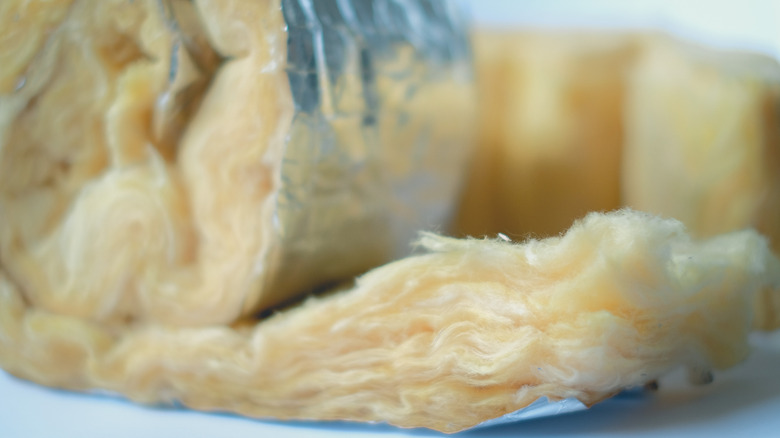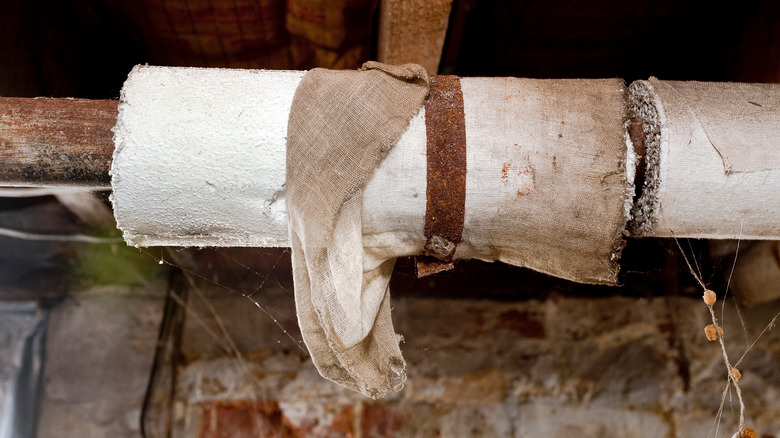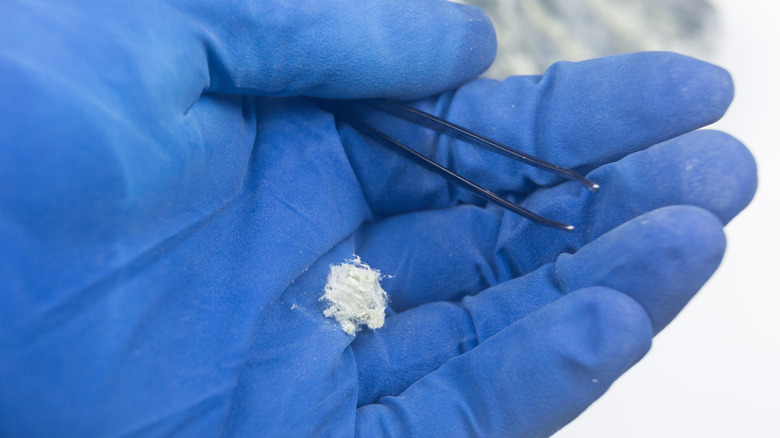A Construction Expert Explains What Asbestos Insulation Is And How You Can Identify It
Renovating older homes has become a popular pastime in recent years, as many people are inspired by television shows that focus on flipping and remodeling outdated houses. Part of the renovation process involves the question of whether or not asbestos will be discovered in the home's insulation. The material was used for decades in residential construction, but it's now understood to be a toxic substance. What exactly is asbestos, and why was it popular in homebuilding for so long? Most importantly, how can you determine whether this type of insulation is in your home? House Digest spoke exclusively with Jon Wiest, owner of Ripped Jeans Construction, to learn more about this problem.
Ripped Jeans Construction specializes in home remodeling work, and the challenge is always present to identify asbestos in any older home the company works on. In speaking with House Digest, Wiest provided some background on the history of the material. "Asbestos is a naturally occurring mineral found in the earth," he explained. "Its fibrous consistency and insulative properties make it a very useful material in many industries, both to reinforce other materials and to make them fire-resistant."
Where to find asbestos
In his exclusive interview with House Digest, Jon Wiest described the challenges of trying to detect asbestos in a home. "Unfortunately, there is no foolproof way to identify asbestos itself. The asbestos fibers are microscopic, and when mixed in with other materials, essentially invisible to the naked eye," he said. Based on his experience, however, Wiest knows where to start looking. "The best way to recognize the possible presence of asbestos is to know what building products it was made into. In homes in the U.S., these are mostly found in old vinyl tiles (especially the black mastic used to adhere the tiles to the floor), old ceiling tiles, and asbestos insulation."
As for where the asbestos insulation might be installed, Wiest said, "The insulation often is either wrapped around old pipes or sometimes in loose vermiculite insulation in the attic." He says it's better to be safe than sorry if you think you've encountered this hazardous substance, noting, "If you're not sure what you might have, you can get all of these materials tested so you know for sure." This kind of test is useful not only because asbestos is hard to identify but also because of the risks involved with handling the material.
Why asbestos is harmful
"The health hazards associated with asbestos are worth taking all these precautions," said Ripped Jean Construction owner Jon Wiest in his exclusive interview with House Digest. "The potential health hazards include mesothelioma and asbestosis — both are lung diseases that can actually manifest themselves many years down the road," he added.
As for when the substance poses the worst threat, Wiest explained that "asbestos is only problematic when it's airborne — if there are tiles or insulation in your home, you don't have to worry;" however, "the time to take precautions is when you want those things removed — any grinding or cutting or breaking runs the risk of releasing those tiny fibers into the air, where they can be breathed."
If you've decided the time has come to remodel your home, you may be uncertain about potential areas of asbestos that could be disrupted and sent airborne during the process. Wiest emphasized to House Digest that it's important to contact a professional to evaluate the situation before you begin any work, but not just any professional: "At this point, you'll want to consult with an expert — asbestos abatement companies are those that have certifications and training to handle these hazardous materials. They are the people to call when you want this taken care of (not just your general contractor)."
By keeping these tips in mind, you can benefit from Mr. Wiest's expertise and be prepared for your next remodeling project.


